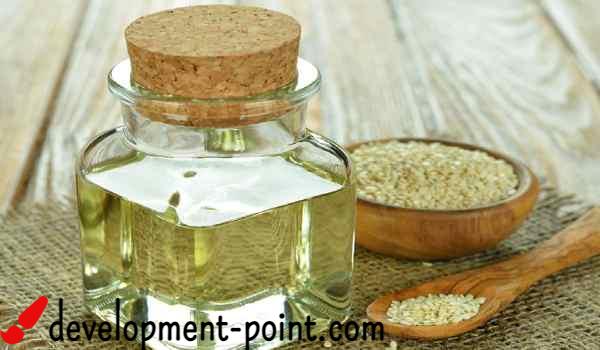What is blood circulation? And what does it consist of? How does it work?
Blood and oxygen move in a tight, organized and continuous cycle known as the circulatory system, and despite its great importance, many may not know enough information about it, so you can follow the following paragraphs to learn about the circulatory system in detail, its components, how it works, its importance and what diseases affect it How do you protect yourself from these diseases?
What is blood circulation?
The heart and blood vessels combine to form what is known as Circulatory System Or what is also known as the Cardiovascular System, whose primary functions include providing muscles, organs and tissues with oxygen, hormones and nutrients, and helps get rid of harmful seasons.
The heart pumps blood through the body through a network of arteries and veins, and the movement of blood through this network is what is known as the circulatory system. This system supplies all tissues of the body with the amount of blood required to function in a correct and effective manner.
The circulatory system consists of the following:
- the heart: A muscular organ that pumps blood through the body.
- Blood vessels: It includes arteries, veins, and capillaries.
- the blood: It consists of white and red cells, plasma and platelets.
The body contains more than 600,000 miles of blood vessels that circulate approximately 5.6 liters of blood per day. The circulatory system has 3 basic cycles, where blood travels through the heart through these cycles in a sequential and continuous system. These courses include:
- Pulmonary Circulation: This cycle carries blood without oxygen from the heart to the lungs, and the pulmonary veins return oxygenated blood back to the heart.
- Systemic Circulation: During this cycle, blood travels with oxygen, nutrients, and hormones from the heart to the rest of the body. In the veins, the blood picks up waste, while the body uses oxygen, nutrients and hormones.
- Coronary Circulation: This cycle involves the arteries of the heart, where the heart muscle is supplied with oxygenated blood. During this cycle, deoxygenated blood is returned to the heart’s upper right chamber (atrium) to be sent to the lungs to be oxygenated.
The importance of blood circulation
The function of the circulatory system is to transport blood through the body, and this circulation maintains the functioning of healthy organs, muscles, and tissues, to maintain a person’s life. This system also helps rid the body of separations or debris, which can include:
- Carbon dioxide produced by respiration.
- Chemical byproducts produced by the body’s organs.
- Residues or waste products from foods and drinks that enter the body.
How does blood circulation work?
The circulatory system works with the help of blood vessels that contain arteries, veins, and capillaries. These blood vessels work with the heart and lungs to circulate blood continuously inside the body. Here’s how this happens:
- The right ventricle of the heart sends low-oxygen blood to the lungs, and this blood travels through the main pulmonary artery.
- Blood cells pick up oxygen in the lungs.
- The pulmonary artery then carries oxygenated blood from the lungs to the left atrium of the heart.
- The left atrium sends oxygenated blood to the left ventricle of the heart, and this muscular part of the heart pumps blood to the body through the arteries.
- Once the blood moves through the body and its organs, it collects and transports nutrients, hormones, and waste products from the body.
- The veins carry the deoxygenated blood and carbon dioxide back to the heart, which in turn sends this blood to the lungs, which work to get rid of these waste products by breathing (exhaling).
Diseases affecting the blood circulation
There are many health conditions that can affect the circulatory system, and the most prominent of these conditions include:
- Aneurysm aneurysm: It occurs when the walls of the arteries weaken and swell, and this weakness can result in swelling as blood passes through the artery, and these bulges may rupture, causing serious, life-threatening complications.
- High blood pressure: Arteries work hard to circulate blood throughout the body, and when the blood pressure on the vessel walls increases dramatically, a person develops high blood pressure. When the arteries become less elastic, less blood and oxygen reach the organs, making a person vulnerable to cardiovascular disease.
- Arteriosclerosis Atherosclerosis: High cholesterol and diabetes can lead to the accumulation of fats and other substances in the blood, and these substances form deposits on the walls of the arteries and atherosclerosis, which increases the risk of strokes, strokes, liver disease and peripheral artery disease.
- Venous diseases: These diseases affect the veins in the lower part of the body due to a lack of blood flow back to the heart and leg veins such as chronic venous insufficiency and varicose veins, in addition to deep venous thrombosis, which can lead to life-threatening complications.
Tips to promote healthy blood circulation
These tips and the following steps can help protect and boost your circulatory system:
- You should get at least 150 minutes of physical activity every week.
- Eat a healthy diet rich in vegetables and fiber, and reduce saturated fats and processed foods.
- De-stress and find healthy ways to do this, such as relaxation techniques.
- Maintain a healthy weight.
- Treating or controlling health conditions that can affect health such as diabetes, high blood pressure and high cholesterol.
- Quit smoking and get any help possible to achieve this in case you face any difficulty.

